Costa Rica Flag Meaning
Five horizontal stripes with blue at top and bottom, white stripes below and above the central red stripe, and the national coat of arms on the red stripe, representing the sky and opportunities, peace, and the warmth of the Costa Rican people.
- Continent
- North America
- Adopted
- 1906
- Ratio
- 3:5
- Colors
- blue, white, red
- Designer
- Pacífica Fernández
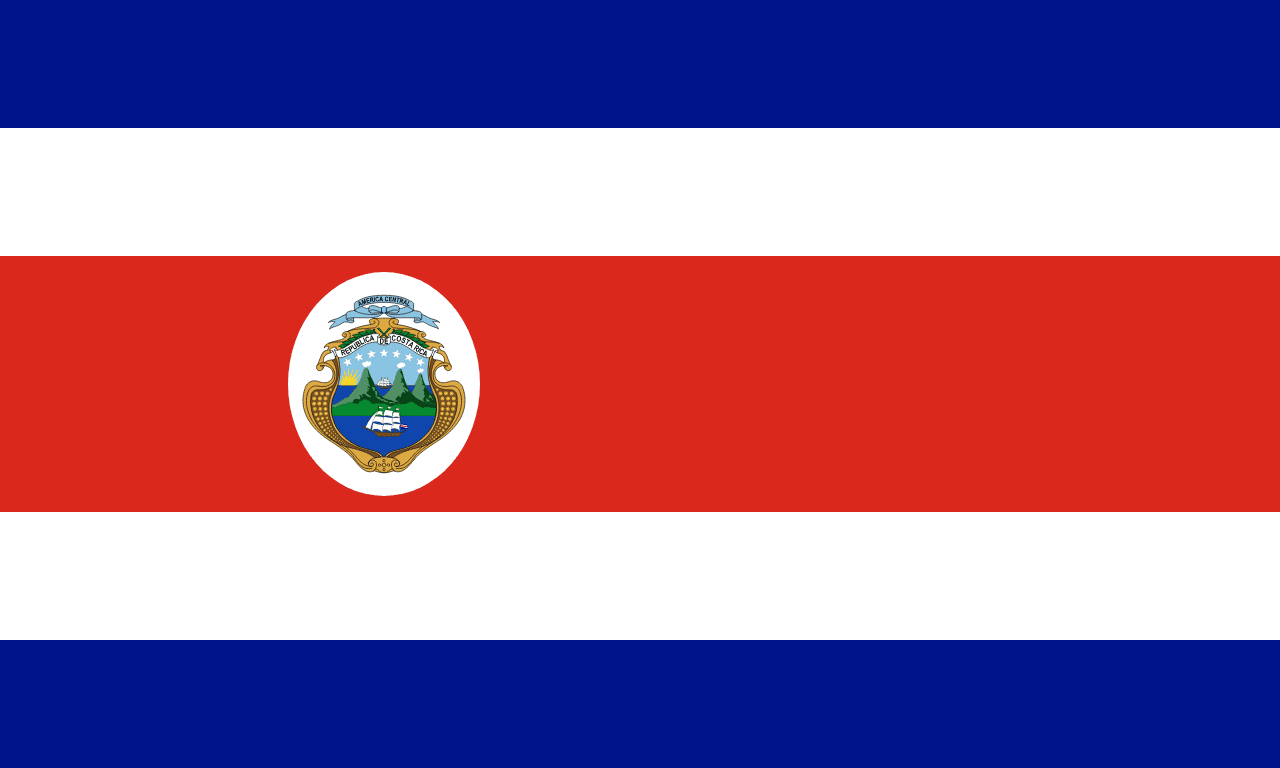
Symbolism
Blue Stripes: Represent the sky above Costa Rica, idealism, and infinite opportunities for the Costa Rican people, symbolizing the optimism and aspirations of this peaceful Central American democracy known for its stability and progress.
White Stripes: Represent peace, wisdom, and happiness, symbolizing the tranquil nature of Costa Rican society and the nation's commitment to peaceful resolution of conflicts both domestically and internationally.
Red Central Stripe: Represents the warmth, generosity, and vitality of the Costa Rican people, symbolizing the passion for life and the blood shed by those who fought for independence and the values of freedom and democracy.
National Coat of Arms: Features three volcanoes representing the mountain ranges, two oceans (Pacific and Atlantic), a sailing ship symbolizing trade, and seven stars representing the provinces, with the ribbon bearing the motto 'Central America.'
History
- Pre-1502: Various indigenous peoples including the Chorotega, Brunca, and others inhabited the region, developing sophisticated societies adapted to the diverse environments from coast to mountains to rainforest.
- 1502-1821: Spanish colonization began with Christopher Columbus's arrival, establishing colonial rule under the Captaincy General of Guatemala, though Costa Rica remained a relatively poor and isolated province.
- September 15, 1821: Costa Rica gained independence from Spain as part of the broader Central American independence movement, initially joining the Mexican Empire briefly before becoming part of the Federal Republic of Central America.
- 1823-1838: Costa Rica participated in the Federal Republic of Central America, using federal symbols while developing its distinct national identity separate from its more politically turbulent neighbors.
- 1838-1848: After the Central American federation dissolved, Costa Rica became an independent republic, initially using simple blue and white stripes before adding the red stripe inspired by the French tricolor.
- 1848: First Lady Pacífica Fernández designed the current flag by adding the red stripe to the existing blue and white design, inspired by the French Revolution's ideals of liberty, equality, and fraternity.
- November 27, 1906: Costa Rica officially adopted the current flag with the national coat of arms, establishing the definitive symbol of the Republic of Costa Rica that represents the nation today.
- 1948: Following a civil war, Costa Rica abolished its military and adopted a new constitution emphasizing peace, democracy, and social progress, with the flag representing these peaceful ideals.
- 1948-Present: The flag has represented Costa Rica's development into a stable democracy known for environmental protection, human development, and peaceful foreign policy, including mediating regional conflicts.
Trivia
- Costa Rica is one of only a few countries in the world without a military, having abolished its army in 1948 and redirecting military spending to education and healthcare.
- The flag represents a country that generates over 99% of its electricity from renewable sources, making it a global leader in clean energy and environmental sustainability.
- Costa Rica is home to about 5% of the world's biodiversity despite covering only 0.03% of Earth's surface, with over 500,000 species in its national parks and reserves.
- The country has the highest concentration of national parks and protected areas in the world, with about 25% of its territory under environmental protection.
- Costa Rica consistently ranks among the world's happiest countries and has the motto 'Pura Vida' (Pure Life), reflecting the relaxed, optimistic lifestyle of its people.
- The flag flies over a country that has been politically stable for over 70 years, serving as a model of democracy and peace in a region often troubled by conflict.
- Costa Rica is famous for eco-tourism and adventure tourism, pioneering sustainable tourism practices including zip-lining, which was invented there for scientific research.
- The country has achieved remarkable social development indicators, including high literacy rates, universal healthcare, and life expectancy comparable to developed nations.
- Coffee has been central to Costa Rica's economy and culture for over 200 years, with Costa Rican coffee being prized worldwide for its quality and flavor.
- Costa Rica is home to both the Pacific and Atlantic coasts, offering diverse ecosystems from cloud forests and volcanoes to tropical beaches and coral reefs.
- The flag represents a country that has produced several Nobel Peace Prize winners, including President Óscar Arias Sánchez, who helped end Central American civil wars.
- Costa Rica pioneered the concept of Payment for Ecosystem Services, compensating landowners for environmental conservation and helping reverse deforestation trends.
- The country has no street addresses in most areas, with directions given using landmarks, churches, and natural features, reflecting its relaxed approach to formal systems.
- Manuel Antonio National Park is one of the world's most biodiverse places, where visitors can see sloths, monkeys, and hundreds of bird species in a small area.
- Costa Rica's constitution includes environmental rights and has been amended to recognize a healthy environment as a fundamental human right for all citizens.
Related Countries
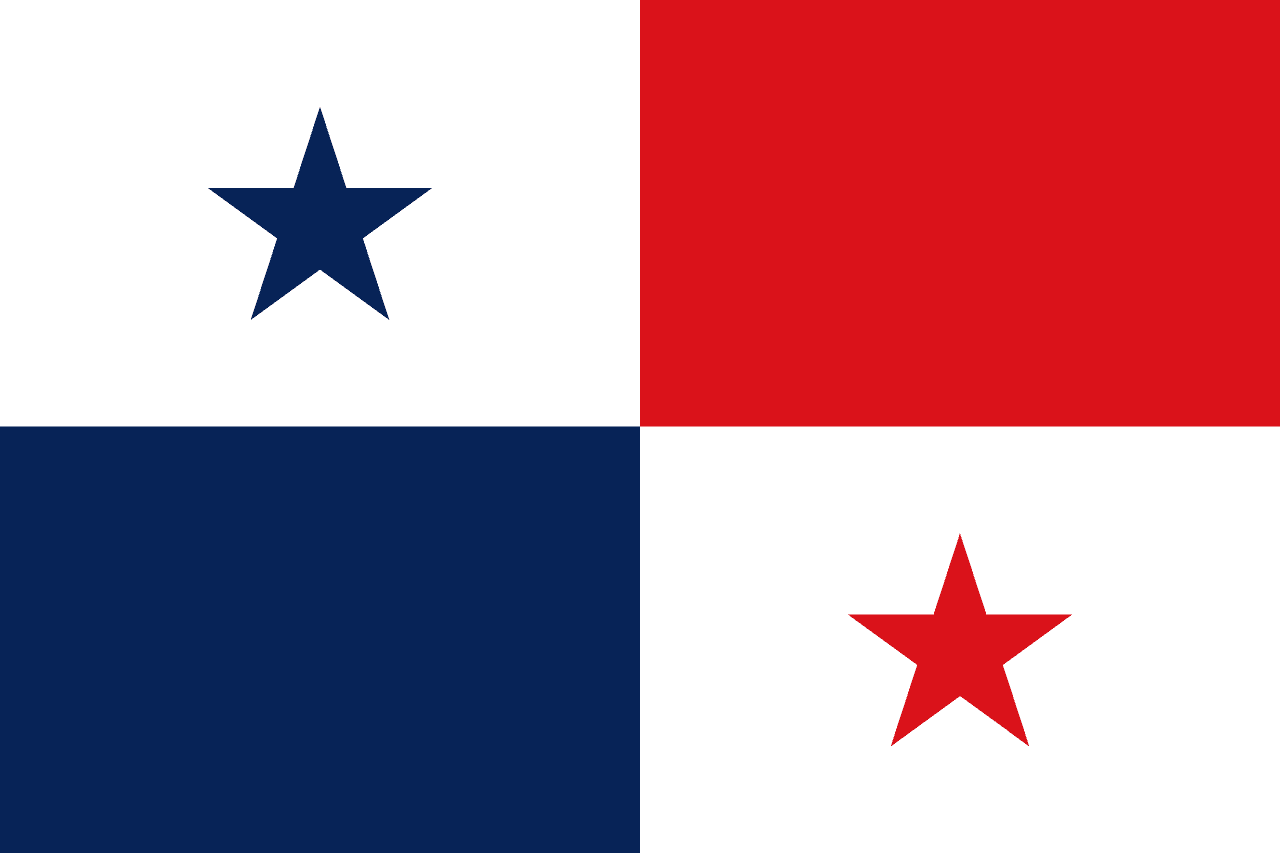
Panama
North America
Quartered flag with white and blue star in top left, red in top right, blue in bottom left, and white with red star in bottom right. The design symbolizes political balance and the ideals of peace and progress.
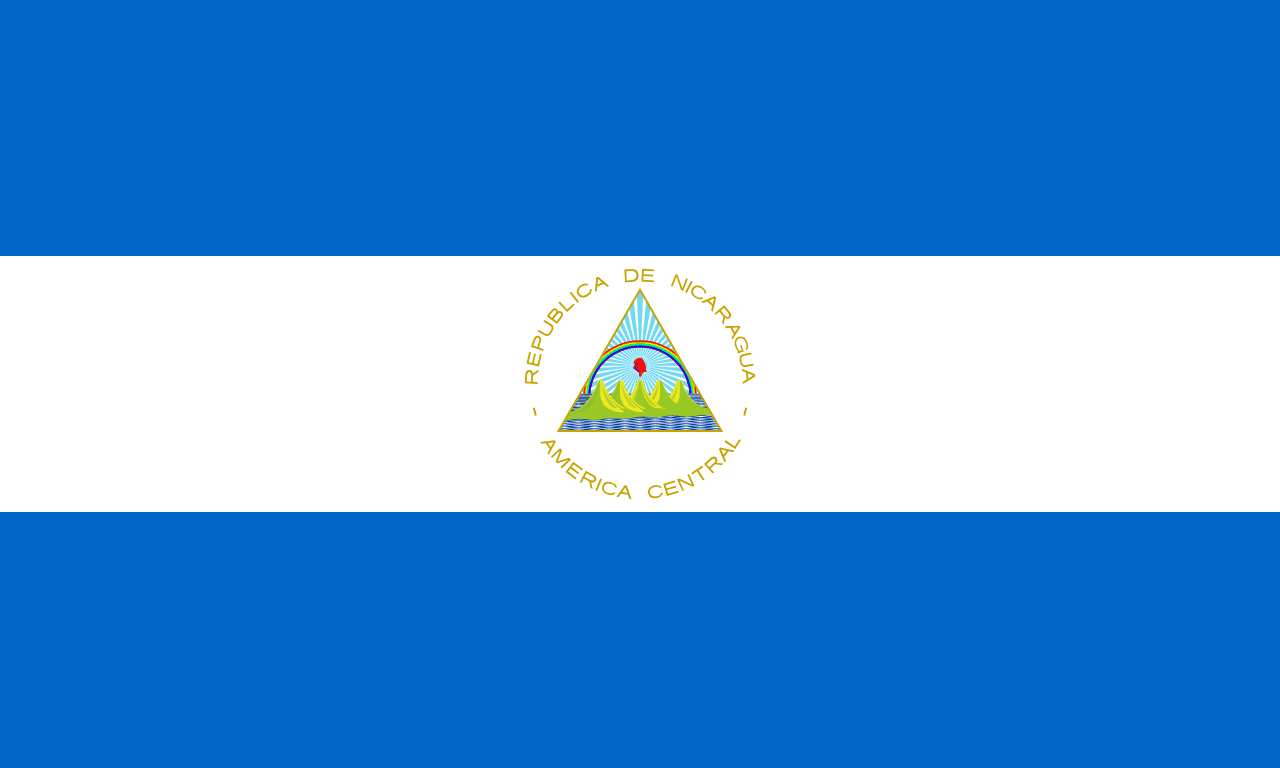
Nicaragua
North America
Three horizontal stripes of blue, white, and blue with the national coat of arms centered on the white stripe, representing Nicaragua's position between two oceans and its revolutionary ideals of liberty and peace.
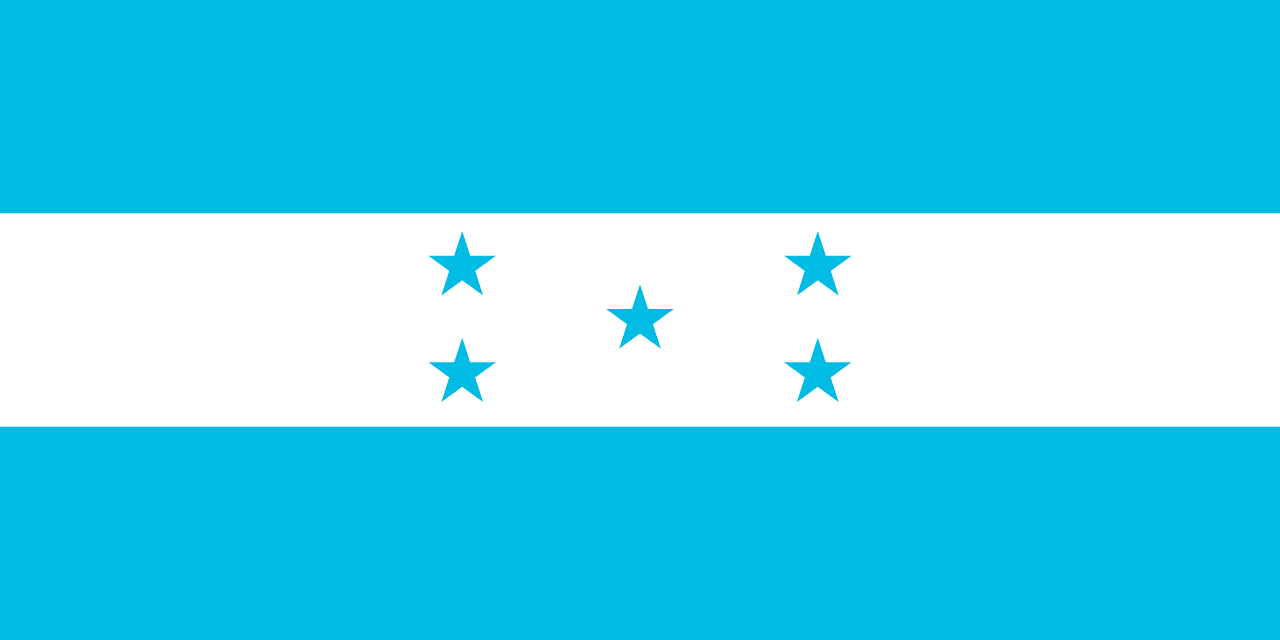
Honduras
North America
Three horizontal stripes of blue, white, and blue with five blue five-pointed stars arranged in an X pattern on the white stripe, representing the Pacific and Atlantic oceans, peace, and the hope for Central American unity.
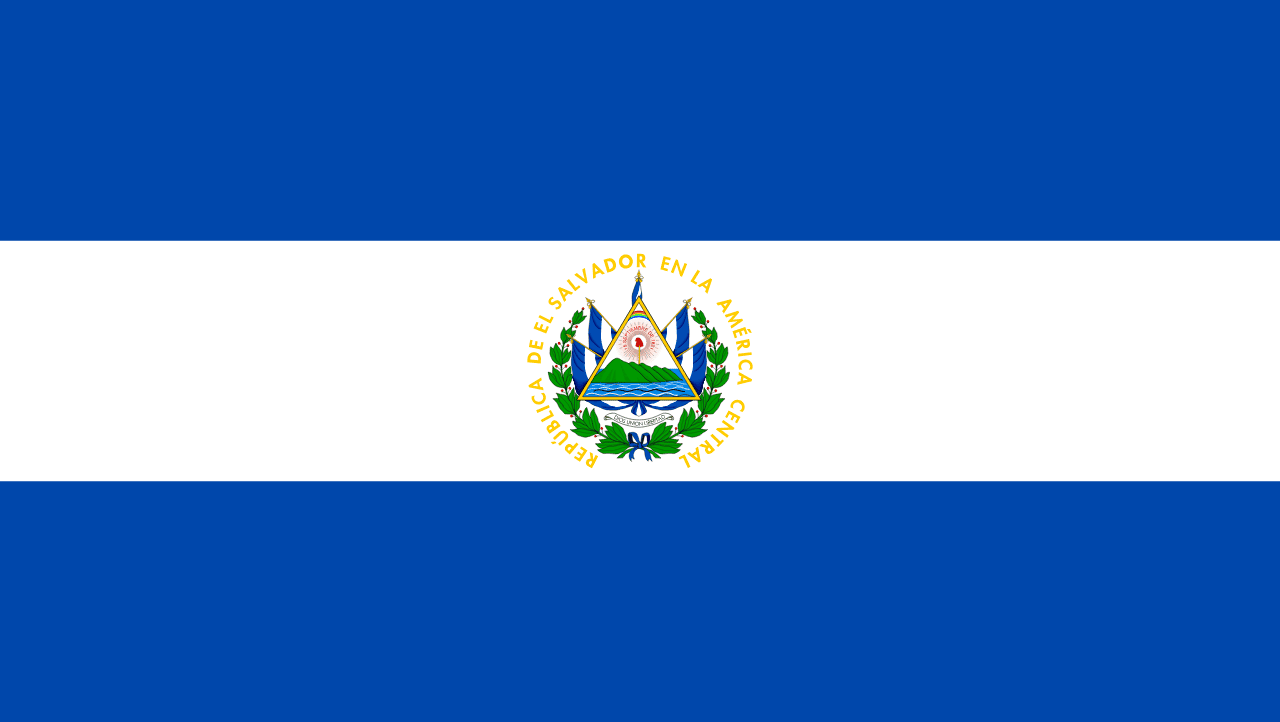
El Salvador
North America
Three horizontal stripes of blue, white, and blue with the national coat of arms centered on the white stripe, representing the Pacific and Atlantic oceans, peace, and the hope for Central American unity.

Guatemala
North America
Three vertical stripes of blue, white, and blue with the national coat of arms centered on the white stripe, representing the Pacific and Atlantic oceans, peace, and the sovereignty of the Republic of Guatemala.
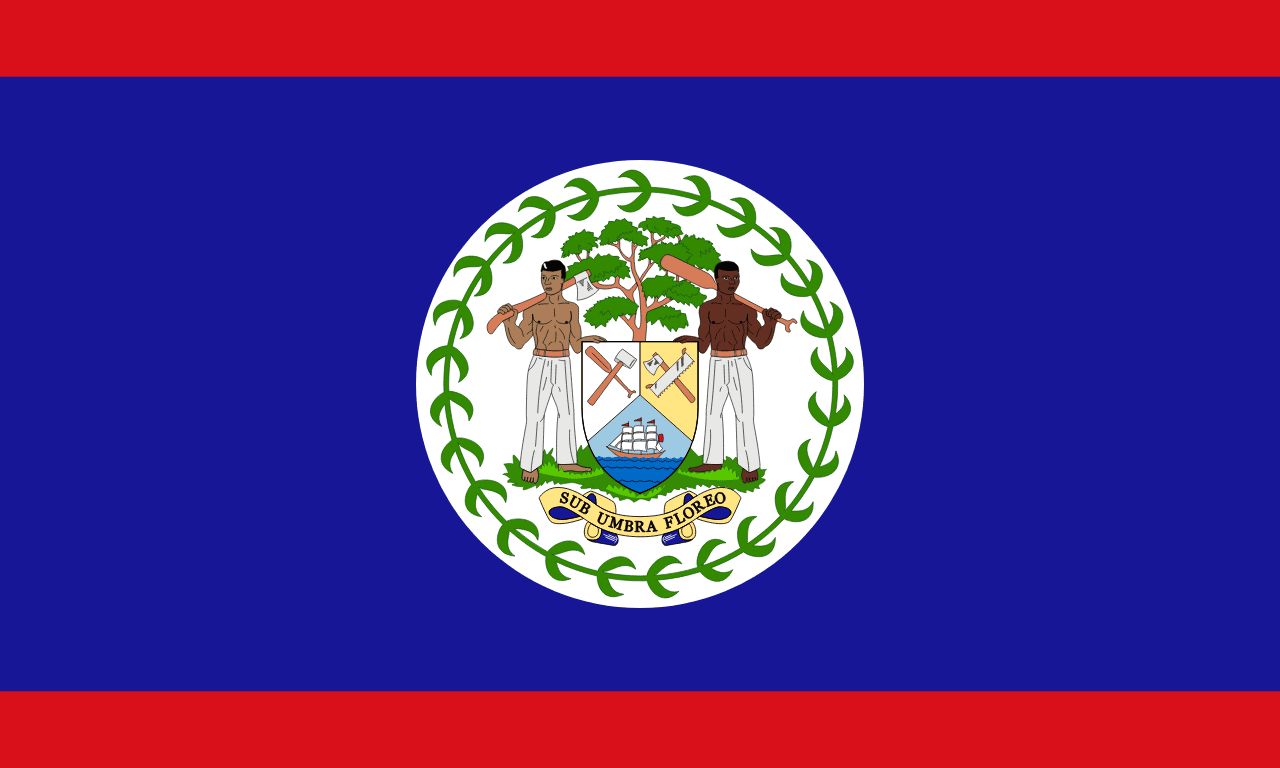
Belize
North America
A blue field with red stripes along the top and bottom edges and the national coat of arms in a white circle at the center, representing the ruling People's United Party, the opposition United Democratic Party, and the peace that unites them, making it the only national flag to feature human figures.